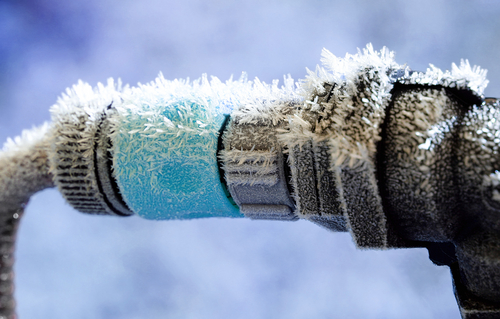Avoid Frozen Pipes at Home This Winter
Tips help homeowners take preventative action
Every winter season, the pipes in your home are at risk of damage from freezing conditions. Low temperatures can cause your water pipes to freeze and, in some cases, burst. The following tips have been provided by the American Red Cross and can help you safeguard your home before, during and after a pipe freezes.
• Disconnect all garden hoses and install covers on outside faucets.
• Keep garage doors closed if there are water supply lines in the garage.
• Open kitchen and bathroom cabinet doors to allow warmer air to circulate around the plumbing. Be sure to move any harmful cleaners and household chemicals up out of the reach of children.
• When the weather is very cold outside, let the cold water drip from the faucet served by exposed pipes. Running water through the pipe, even at a trickle, helps prevent pipes from freezing.
• Keep the thermostat set to the same temperature both during the day and at night. By temporarily suspending the use of lower nighttime temperatures, you may incur a higher heating bill, but you can prevent a much more costly repair job if pipes freeze and burst.
• If you will be going away during cold weather, leave the heat on in your home,set to a temperature no lower than 60° F.
How to thaw out frozen pipes
• If you turn on a faucet and only a trickle comes out, suspect a frozen pipe. Likely places for frozen pipes include against exterior walls or where your water service enters your home through the foundation.
• Keep the faucet open. As you treat the frozen pipe and the frozen area begins to melt, water will begin to flow through the frozen area. Running water through the pipe will help melt ice in the pipe.
• Apply heat to the section of pipe using an electric heating pad wrapped around the pipe, an electric hair dryer, a portable space heater (kept away from flammable materials), or by wrapping pipes with towels soaked in hot water. Do not use a blowtorch, kerosene or propane heater, charcoal stove, or other open flame device.
• Apply heat until full water pressure is restored. If you are unable to locate the frozen area, if the frozen area is not accessible, or if you cannot thaw the pipe, call a licensed plumber.
• Check all other faucets in your home to find out if you have additional frozen pipes. If one pipe freezes, others may freeze, too.
• Monitor your house for burst pipes, especially if your water lines are located in the ceiling.
• If a pipe bursts, turn off your water at the main valve and the valve on your water heater.









